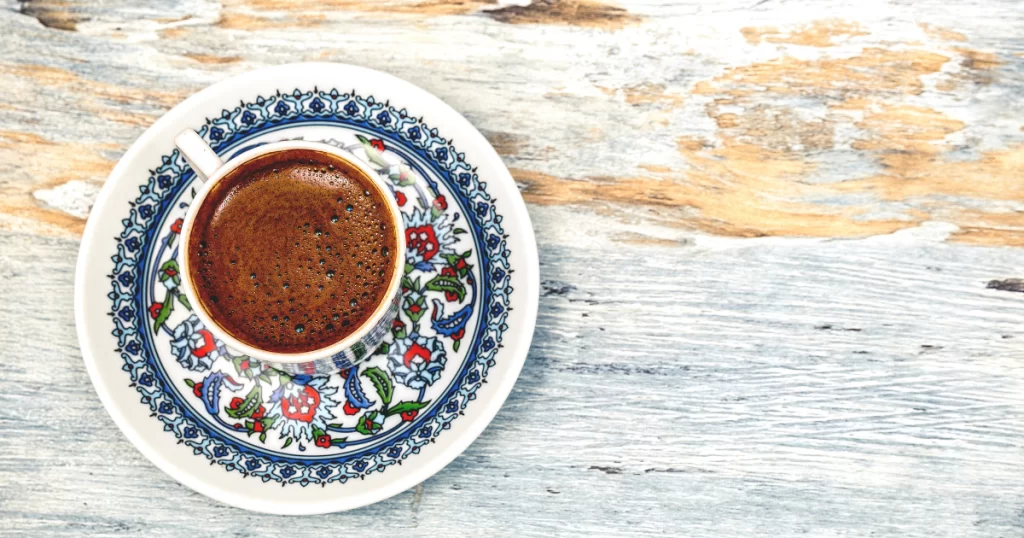Every region has its own distinct brew that adds a touch of cultural identity to its coffee-making process. The same goes for Armenian and Turkish coffee. At first sight, these two coffees are completely the same, but there is one key ingredient in Armenian coffee that makes a huge difference in the taste.
Here, we will explain what separates Armenian and Turkish coffee. I highly recommend this article for those interested in an in-depth understanding of Turkish coffee’s unique characteristics.
Armenian vs Turkish coffee – What is the difference?
Both are strong and bold, prepared by simmering finely ground coffee in a special pot called a cezve, alongside a generous amount of water and sugar.
They are both served in a small cup called fincan, meant to be savored slowly. However, the secret lies in one small yet significant addition that distinguishes Armenian coffee from its Turkish counterpart – cardamom.
Cardamom, the aromatic spice with a distinct minty, spicy-sweet flavor, is the magical ingredient that gives Armenian coffee its unique twist.
While Turkish coffee typically relies solely on the rich flavor of the coffee beans themselves, Armenian coffee is enriched with crushed cardamom into the cezve during brewing.
The warm, earthy notes of cardamom lend a subtle layer of complexity to the already robust brew, tantalizing the senses with each sip.

How to make Armenian coffee?
Here is a step-by-step process on how to make Armenian coffee:
- Start by adding around 70 ml of water, one cardamom, and one teaspoon of finely ground Arabica coffee to your pot. You can add sugar if you want.
- Place the pot on a stovetop burner over medium-low heat and mix all the ingredients. Make sure to keep the heat low.
- Allow the coffee to come to a gentle simmer. It’s crucial to keep a close eye on the pot and ensure that the coffee doesn’t come to a rapid boil. This slow and controlled simmering is what allows the flavors to develop fully.
- As the coffee simmers, you will notice a layer of froth forming on the surface. This froth, known as “kaymak” or “coffee cream,” is an esteemed part of Armenian coffee.
- Now it is time to pour Armenian coffee into the cup. Once you pour it, let it sit for one minute so the coffee grounds can sink to the bottom.
How to prepare Turkish coffee?
Turkish coffee preparation follows a similar process to Armenian coffee, with one notable distinction – the absence of cardamom.
What coffee is stronger – Turkish or Armenian?
Both varieties possess a level of robustness that coffee enthusiasts crave. The strength of a coffee is determined by factors such as the coffee-to-water ratio, the coffee bean quality, and the brewing method.
If you are particularly interested in exploring the strength and potency of Turkish coffee, check out this article.
Final thoughts
Even though Armenian coffee and Turkish coffee are practically the same beverage, if we don’t consider the cardamom, I have to say that the brew from Armenia reminds me more of Arabic coffee.
Check out this article to see what is the difference between Arabic and Turkish coffee.
My journey through renowned bars and coffee shops over five years, as a barista, coffee aficionado, and former bartender, has honed my pursuit for the perfect cup. My passion for coffee isn’t just about the brew—it’s about sharing the knowledge and insights I’ve gleaned along the way.



